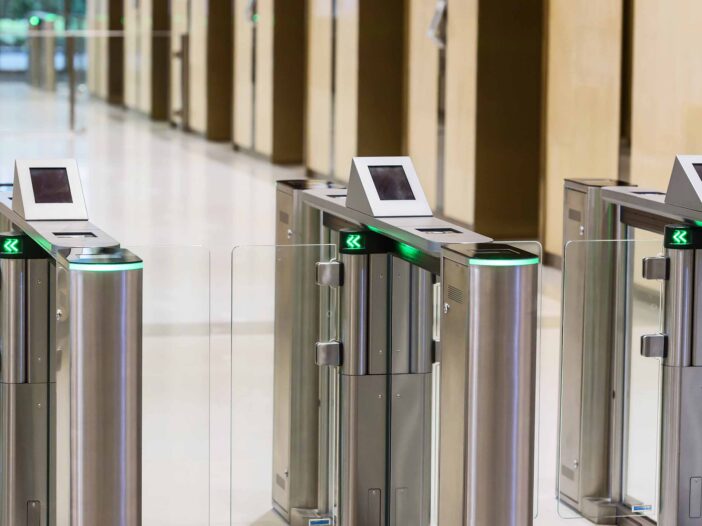
Liz Cummins, Managing Director for London Security Solutions at Bidvest Noonan, has contributed an insightful article on Next Generation Access Control. In this piece, she explores the impactful shift towards mobile credentials and biometric access.
The access control landscape has evolved continuously for over 20 years and today is at yet another turning point. Gone are the days when simple locks and keys were sufficient, and soon key cards, fobs and PIN codes may also be toppled from their position in access control.
Today, digital transformation is reshaping our approach to security, significantly benefiting security teams by enhancing access control measures. Mobile credentials and biometric technologies have emerged as the frontrunners in this new era. Both of these are explored below:
Mobile Credentials: Your smart device is the key
The use of mobile credentials reflects an understanding of modern behaviour. We carry our mobile phones with us wherever we go. We are all accustomed to using mobile devices to manage our lives, and in the security industry, mobile devices are already an indispensable part of most security solutions, with officers using these devices to record incidents and proof of presence.
The use of mobile credentials offers a seamless, frictionless experience for building users and visitors and improves user satisfaction, operational efficiency, and security. It allows users to gain access to secured doors, gates, networks, and services without the hassle of traditional physical tokens.
Mobile credentials work by storing your access information on your mobile device. This data can then be seamlessly used to gain access to specific areas within a building using proximity-based technology, such as Near Field Communication (NFC) or Bluetooth. For the user, this means they can navigate their building without repeatedly fishing around for their key card.
For security teams, the adoption of mobile credentials is transformative, enabling them to manage access rights more efficiently and respond to security threats more dynamically. Security teams can create, manage, issue, and revoke credentials entirely through cloud-based platforms. This shift enhances security measures. Mobile credentials are far less likely to be lost or misplaced unlike traditional physical security tokens, and mobile devices offer a layer of security to protect against use in the wrong hands that a plastic card or fob cannot offer. Of course, mobile credentials are not without security vulnerabilities, while they are a step forward, the security of mobile credentials is tied to the security of the device and the behaviour of its owner.
Biometrics: Your physical presence is the key.
Biometric technology appeals to our desire for tight security controls, efficiency, and convenience. These technologies typically use physical characteristics such as fingerprints, facial recognition, and iris scans to confirm an individual’s identity. Biometric systems are inherently more secure because the physical characteristics used are unique to the individual. They cannot be easily forged, duplicated, or shared, which stands in stark contrast to traditional methods like passwords or key cards.
With biometrics, building users may not need to remember passwords or PINs, or carry physical devices such as phones, key cards or fobs to gain access to spaces or services. Earlier generations of these technologies had their inconveniences, taking time to measure and process biometric data. However, modern systems complete these tasks in the blink of an eye. The latest facial recognition systems can identify an individual in under 0.2 seconds and they are fast and effective even in low light situations.
Yet, despite these advantages, biometrics are not without their challenges. They are not a panacea and can still be vulnerable to high- tech impersonation and clever bypasses. No security system will ever be perfect.
Biometric systems introduce privacy concerns and strict data protections as they collect and store biometric data, a special category of personal data. Companies store the biometric data they collect in databases that can be hacked by nefarious actors.
In essence, while biometric technology offers significant improvements over traditional security methods in terms of convenience and security, it also necessitates a careful consideration of privacy issues and the potential for sophisticated attacks. It is a powerful tool in our security arsenal, but one that must be wielded with caution.
Final thoughts
As the landscape of security technology evolves, mobile credential and biometric systems are becoming more powerful, sophisticated, and affordable. Advances in these technologies are driving their popularisation.
When devising a security strategy, it is imperative to consider the blend of solutions that will offer not just robust protection, but also integrate with the behaviour and expectations of users. There is never a “one size fits all” solution in our industry. Each organisation comes with its unique set of challenges, demands, and vulnerabilities. The right mix of security technologies is the one that aligns best with the specific needs and objectives of the organisation.
Ultimately, the decision to implement mobile or biometric access control systems should be a well-informed one, grounded in a thorough understanding of the organisation’s unique environment, culture, and risk profile.
Access control will never be about adopting the latest technologies; it’s about identifying technology’s place and potential within a comprehensive security strategy.
